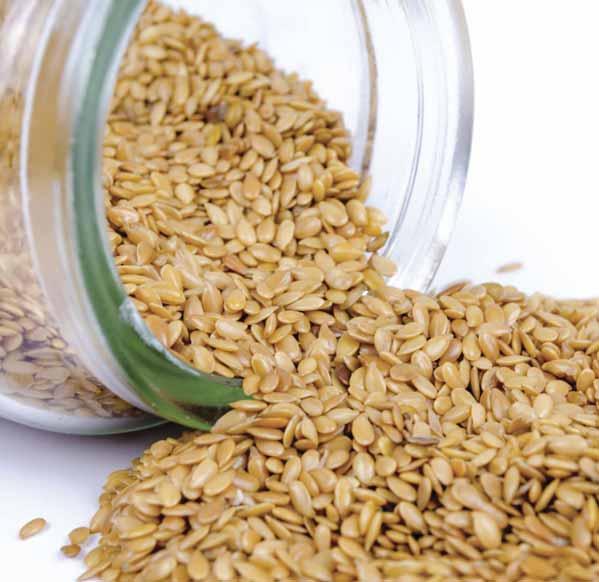
4 minute read
Biosystems Engineering
Biosystems Biosystems Engineering Engineering
Biosystems Engineering, owned by the IAgrE, and the ocial scien琀昀c journal of EurAgEng, is published monthly with occasional special issues. Head to h琀ps://www.sciencedirect. com/journal/biosystems-engineering to view the full ar琀cle list of the latest edi琀on and to 昀nd out more about depth and breadth of ar琀cles accepted for publica琀on. Reduced subscrip琀ons are available to IAgrE members. Go to h琀ps:// iagre.org/biosystemsinforma琀on for details of the preferen琀al rates for both paper and electronic versions. The managing editor of Biosystems Engineering, Dr Steve Parkin, has kindly summarised a selec琀on of papers published in the last three issues, which will be of interest to IAgrE members.
Advertisement
Biosystems Engineering Volume 207, July 2021, Pages 92‐105 Investigation of the potential to reduce waste through sampling and spatial analysis of grain bulks Ruth Kerry, Benjamin R. Ingram, Esther Garcia‐Celac, Naresh Magan Brigham Young University, Provo, UT, USA Facultad de Ingeniería, Universidad de Talca, Chile University of Hertfordshire, Hatfield. AL10 9AB, UK
Batches of grain are accepted or rejected based on average mycotoxin concentrations in a composite grain sample. Spatial analysis of mycotoxins in two grain bulks was performed to determine the spatial distribution of toxins, whether they were co‐located and the proportions of grain over legislative limits. The 2D distribution of deoxynivalenol (DON) and ochratoxin A (OTA) in a truck load of wheat grain was analysed, as was the distribution of fumonisins (FB1 and FB2) in a 3D maize grain pile. The data had been previously analysed, but results here show that highly skewed data would need to be transformed to investigate spatial autocorrelation properly. In the truck of wheat grain, DON and OTA showed co‐variation and, in contrast to previous studies, OTA showed spatial structure when converted to normal scores. Post‐harvest, strategically placed sensors could be used to monitor environmental conditions within the stored grain in real time and detect the first signs of spoilage allowing swift remediative action so less grain is wasted. Pre‐harvest approaches for mycotoxin management are suggested as additional food waste reduction strategies. Biosystems Engineering Volume 208, August 2021, Pages 272‐286 Sensitivity analysis of fine dust spreading from litter in poultry houses Sayed M. Derakhshani, Nico W.M. Ogink, Bram A.P. Bos Peter W.G. Groot Koerkamp Wageningen University, Wageningen, the Netherlands Wageningen Livestock Research, Wageningen, the Netherlands
Poultry houses are one of the major sources of agricultural particulate matter (PM) emissions into the environment. Litter properties, poultry activities, and indoor climate of poultry houses are the main parameters that influence the dust emission, but precise quantitative effects and their interactions are hardly known. This study aimed to gain quantitative insight into the dust spreading process from poultry litter by using the discrete parcel method (DPM) and global sensitivity analysis (GSA). The dust spreading process includes the creep, suspension, and saltation of fine particles was simulated with the DPM within the aerial region close to the litter. The simulations proved that a collision between an object and the litter should happen to release particles from the litter into the air. It was indicated that the released particles with a diameter ≥30μm and particle density ≥1400kg m−3 were deposited on the litter for all tested air velocities. Also, particles <10μm diameter remained suspended for airflow velocities >1.5m s−1. The GSA indicated that the creep process has a direct relation with the airflow velocity and coefficient of restitution and an inverse relation with the particle density and the coefficient of friction. Biosystems Engineering Volume 20209, September 2021, Pages 256‐270 A mechanistic thermal balance model of dairy cattle Jinghui Li, Vinod Narayanan, Ermias Kebreab, Serdal Dikmen, James G. Fadel Department of Animal Science, University of California, Davis, CA, USA Department of Mechanical and Aerospace Engineering, University of California, Davis, CA, USA Department of Animal Science, Bursa Uludag University, Bursa, Turkey
A dynamic model describing the thermal balance of Holstein dairy cattle was developed. The model quantified the heat flow of five main nodes at the body core, top and bottom skin, and top and bottom coat of a dairy cow. Heat production by the animal and heat flows between the animal and the environment, including conduction, convection, evaporation and radiation, were calculated based on existing models and physical principles. The model requires information of climate, animal characteristics and location as inputs, and returns body core, skin and coat temperatures as outputs. The thermal balance model was evaluated through two datasets. A simulation study was conducted based on a Holstein dairy cow with 600kg of body weight and 25kg of daily milk yield under a typical summer environment in California, USA for three days. The average simulated temperatures of body, top and bottom skin, and top and bottom coat were 40.9, 35.6, 35.9, 34.1 and 33.7°C, respectively. A local and a global sensitivity analyses showed that heat production, surface area and the parameters relative to respiration and sweating were the most sensitive. The model is able to predict the dynamic change of body temperature under hot weather, and to guide the use of physical cooling strategies, such as shade, fans, sprinklers and cooling mats in dairy facilities.
The Landwards podcast
A series of podcasts have been commissioned with a monthly news podcast and a monthly interview with an agricultural engineer or in昀uen琀al person in the land based sector. The Landwards podcast is on iTunes, Spo琀fy or click on h琀ps://www.buzzsprout. com/1067353/episodes for the latest one.










